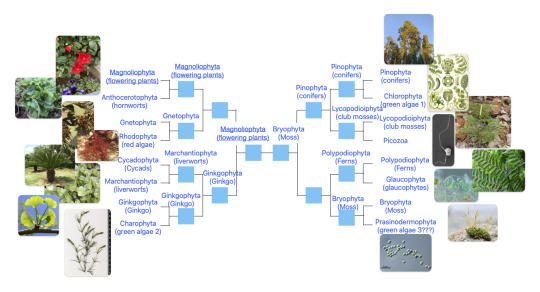Text
#2063 - Ptychostomum capillare - Capillary Thread-Moss
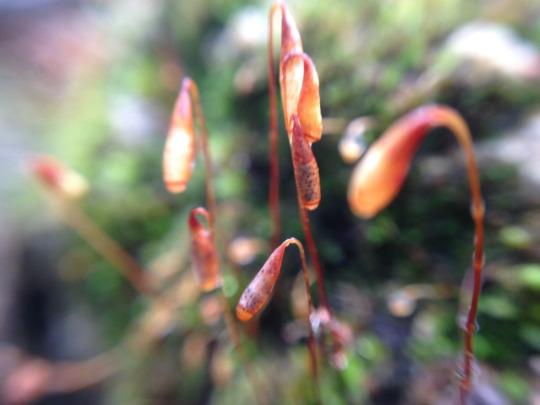

Formerly Bryum capillare. A cosmopolitan species that is now found in tropical and temperate habitats worldwide, including growing under artificial lights in Wisconsin's Crystal Cave. In Australia it's common in woodlands, wet sclerophyll forest, rainforest, coastal vegetation and beside waterways.
When mosses growing in an abandoned mine in Spain were studied, it was found to be an effective bioacculmulator of copper, apparently sequestering the metal in the leaf waxes.
2 notes
·
View notes
Text


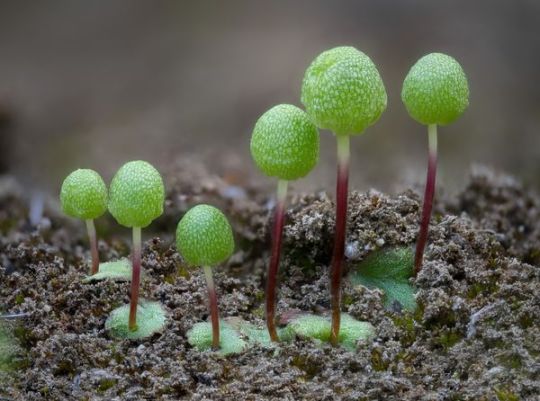
Asterella palmeri from Baja California, Mexico
This liverwort is endemic to the western USA and northwestern Mexico.
photograph by Alan Rockefeller
358 notes
·
View notes
Text


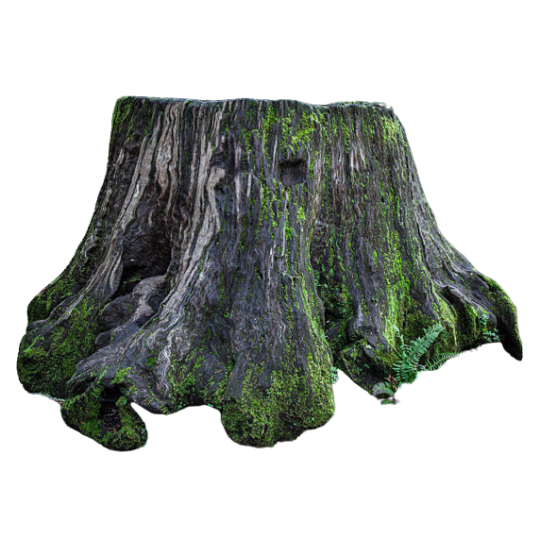
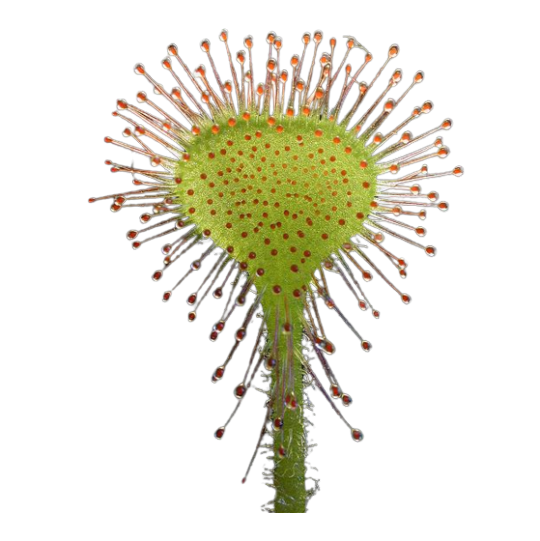

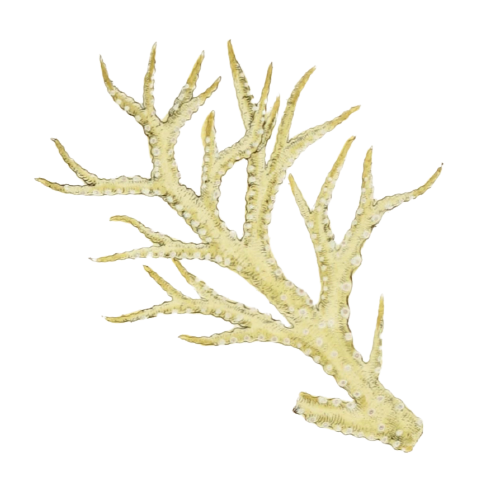
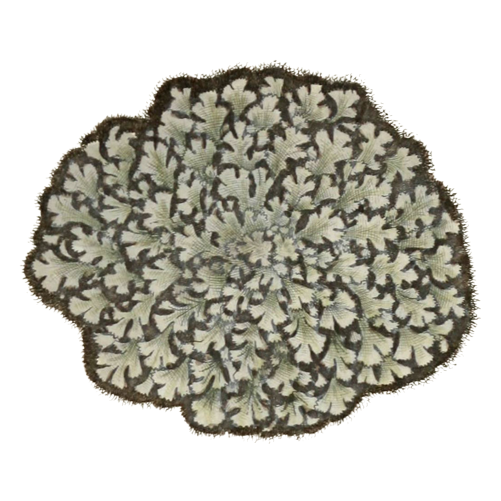

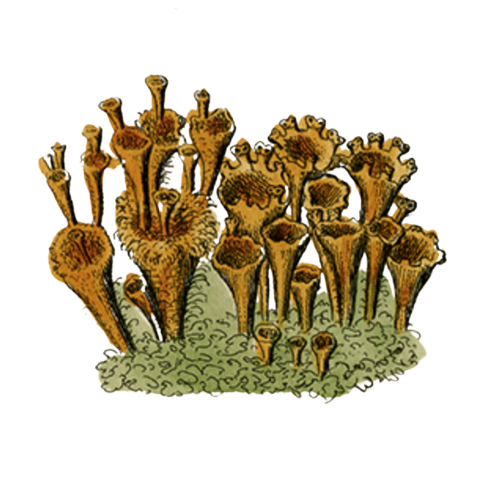
Moss & lichen PNGs.
(1. 2. 3. 4. 5. 6. 7. 8. 9.)
#yesss#but also there is a sundew in there (left middle) which is neither of those#if I’m not ‘moss’taken#heh
5K notes
·
View notes
Text
Very true. No one regulates moss harvesting, and some tufts of moss can be centuries old. Just as important as old growth trees. Mosses are tiny forests, each individual sprig is like a tree.
If you love the mosses, leave them! If you don’t know what you’re collecting you could wipe a species off the face of the earth with a single collection.




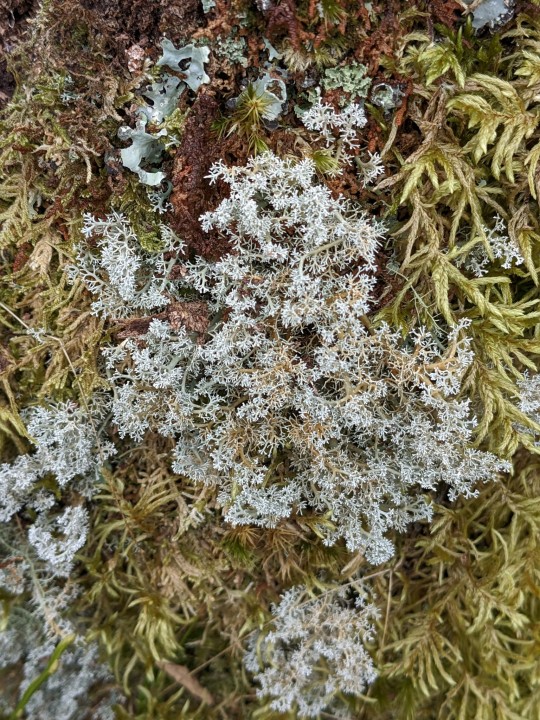

Coral lichens, Coed Felinryd & Llenrych
Don't know if I already shared these and I don't care, because they're good lichens! Pls enjoy the lichens.
Pls also take care of your local woodland if you have one, and don't pick lichen and moss off the trees for your floral arrangements etc. The moss matts and lichens on trees take years to grow, and are their own special ecosystem. Take windfallen ones if you need em, but don't pull them off branches.
People peeling aaaall the moss & lichen matting off tree branches to sell for floristry or interior decor is also a problem in some forests - so be careful what you buy. Thank you for your time 🌿💚🌳
72 notes
·
View notes
Text
They have one of the largest collections of moss in the country! Which is saying a lot because mosses are usually underrepresented. If you care about mosses please take a second to sign this!
after barely a day of my poll being up it seems like so many people know about and really love natural history collections which makes my heart sing!! i would love for my fellow natural history nerds to rise up and sign this petition to protect one!!
duke university is CLOSING its herbarium which holds over 800,000 plant/fungus/algae specimens including 2,000 types spanning 180 years of collection effort all across the planet. it is the second largest private university herbarium in the entire united states. this is really bad!! i will explain in short terms:
every natural history collection's purpose is to collect and maintain specimens, which are collectively supposed to be a thorough representation of biodiversity across time and space. when sampled at regular intervals at the same places, specimens can tell endless stories about changes in shape, abundance, range, genetics, and SO much more. basically, they are a big sample size to use in all manner of studies, including those that concern climate change and biodiversity loss! new species and evolutionary relationships are constantly discovered at collections even when specimens are like 100 years old. duke has recently championed itself as a global leader in biodiversity research which is honestly in jawdropping conflict with its move to close its herbarium. this herbarium not only supplies duke researchers with material but researchers all over the world. specimens have been cited in over 46,000 publications and over 13,000 since 2019 alone. we have old shit in our cabinets but the science is anything but history!
faculty and staff have 2-3 years to move the specimens elsewhere which is NOT enough time for 800,000 old dried plant/fungus specimens. this is an issue in even the BEST natural history collections at the biggest institutions but collections are pretty much always understaffed and underpaid. a university collection usually relies a lot on student labor and you know they do not have the time to be contributing to this move. to find collections that would take these specimens AND allocate the manpower and time needed to send them off is not feasible. types, especially holotypes should really NEVER be transported because they serve as the exemplar for the characteristics of the species it represents. i do not feel good about hurrying 800,000 old, fragile specimens including 2,000 types getting moved in a short amount of time by a few people. i do not want to know what will happen to the remaining specimens that don't make it out in time.
this sets a really dangerous precedent for other university collections across the world. this is not a random state school, this is duke university, which is practically an ivy league. if they close such a prominent and respected collection just because they're not 260% maximizing their profits, it may let other greedy university admins know they can get away with the same. i've only been in the professional collections world for a short time but shutting down a collection let alone one as big as duke's is almost UNHEARD of. i haven't seen scientists band together so strongly and quickly over an issue (i'm in an ENTOMOLOGY collections listserv and someone advocated for emailing duke admin against this decision), probably because they can all agree on how strongly this could impact climate and biodiversity research and policymaking down the road.
tl;dr if duke herbarium really closes, we would be losing a vital hub for ongoing and future research that helps us understand how our world is changing through the dynamics of our plants and their allies. other institutions might see this and follow suit with their own collections.
219 notes
·
View notes
Note
I just wanted to sneak an ask in here before you close the box to put a valentine’s day thing out for my friends! Hi friends!! I love you all so much platonically y’all are the greatest!! It makes my day so much brighter just being around you guys. I’m so! So happy that you guys exist, even more that you’re my friends! May your valentine’s day be great no matter what kinda love you’re celebrating it for!!! Love you! :huggingyou: <333
String identified:
t at t a a a c t t t a at’ a tg t ! !! a c atca ’a a t gatt!! t a a c gt t g a g. ’ ! a tat g t, tat ’ ! a at’ a gat att at a ’ catg t !!! ! :ggg: <333
Closest match: Marchantia polymorpha subsp. ruderalis Tak-1 DNA, chromosome: 6

347 notes
·
View notes
Text

Gotta catch ‘em all! But there’s 20,000 species of moss and counting so uh, good luck!
15 notes
·
View notes
Text




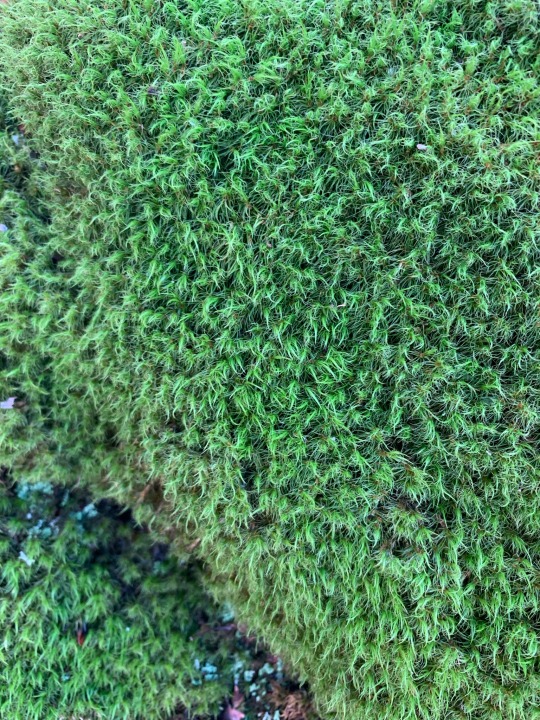
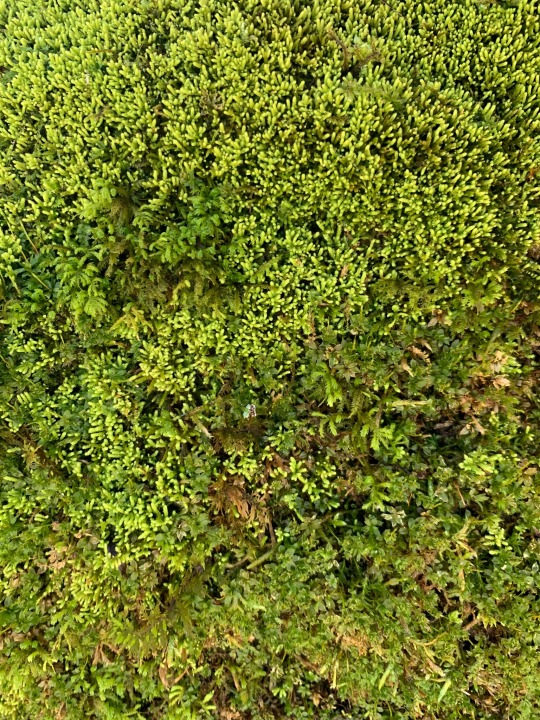

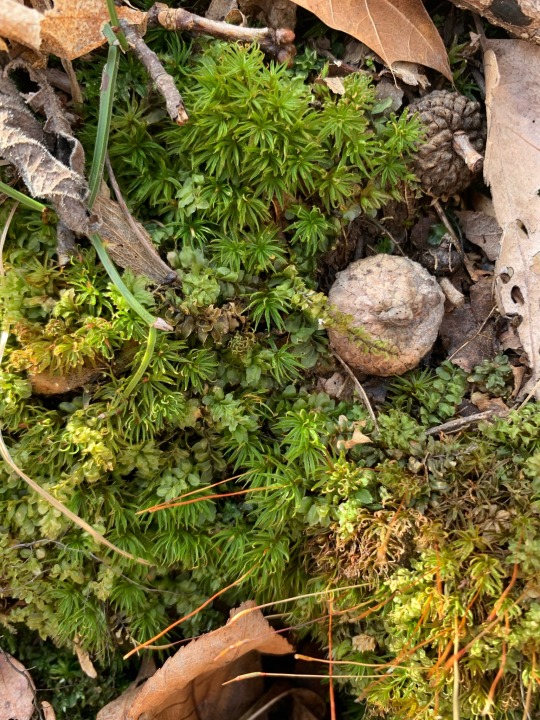
Consider the Moss. When it is not honored with attention and curiosity, it appears to be simply a green fuzz that grows upon damp surfaces. If you do not know the ways of the plants, you could be tempted to understand moss as an unhealthful or infectious substance similar to mold, even to buy moss-killing poisons for the moss in your lawn. What a tragedy, to destroy what you do not understand!
A moss is simply a plant of the ancient phylum Bryophyta, in which a fantastical variety of plants exists. Look closely—what's this? They are no longer simple green fuzz to the eye!
Some form tiny puffs, others sprawling branches, some vinelike runners, feathery plumes or plump fingers, some scraggy tufts like hair, and some plush, mounding masses. Some mosses in fact have tiny leaves, round or pointed, arranged in rows or in poofy rosettes. Some mosses look like velveted antlers, others crackling fireworks, others the tails of cats, others the toes of frogs. Some mosses creep along, others pile up, still others sprawl in orderly lines, some cover a boulder in luxurious pelts, and yet another will cling unevenly in scruffy little bits wherever it can scrape by.
Though mosses grow upon trees sometimes, they do the trees no harm; they are in fact very beneficial to the entire plant community. They protect the land from becoming dried out and eroded, regulate the temperature of the other plants' roots, and provide a lush habitat for little creatures like tardigrades. Importantly for us, they also help carbon dioxide in the air become stored in the soil.
1K notes
·
View notes
Text

Most peat moss (And sphagnum moss) sold in the US is strip mined from peat bogs in Canada. First, the bog is drained, then vegetation is removed. Then the peat is harvested, dried, packaged and shipped.
The process destroys the bog ecosystem and releases Co2 into the atmosphere. Don't buy peat products or products containing peat. Use compost or coco coir.
No houseplant is worth the death of entire ecoststems.
3K notes
·
View notes
Text
I got the moss!
(texting) putting together a crew to set up a new botanical garden. let me know if you're in. charles is on fountains and he has some great ideas so don't even ask
3K notes
·
View notes
Text
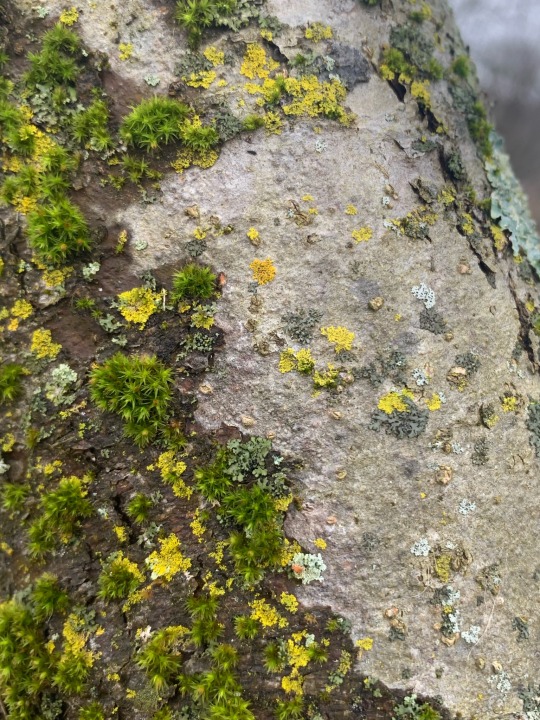
earlier was gazing in awe at the trunk of an old apple tree at the splendid pasture of lichen and moss in which there were tiny pinkish eight-legged bugs walking around, like little cows in a beautiful dappled field, so small that my phone camera can't even catch them except as little blurry spots.
My eyes had to focus in closely in a maneuver that was physically strange, the strangeness communicating to me that I wasn't used to looking at something so small. There are levels of smallness that we humans are able to perceive, but leave mostly unused in our world.
It made me feel very strange to realize that humans are among the largest organisms ever to exist, and that the majority of species by number and diversity are of a size where the scale of their world has no conception of continent bounded by ocean and biomes ranging from forest to desert, where entire lifetimes are lived upon the branches of a great organism so incomprehensibly large it might as well be an island or continent or world in itself. Organisms for whom the changing of the seasons is like the rise and fall of empires and ages, whose senses likely cannot fully perceive us due to our prodigious size, who could be destroyed by a touch and thrown from their world into a totally alien place by a breath.
If God was imagined by ancient peoples, then he is evidence of a species learning to understand itself, identifying intentionally with the status of Smallness so our Vastness does not make us cruel gods to those to whom we are powerful.
We still have so much to learn...
271 notes
·
View notes
Text
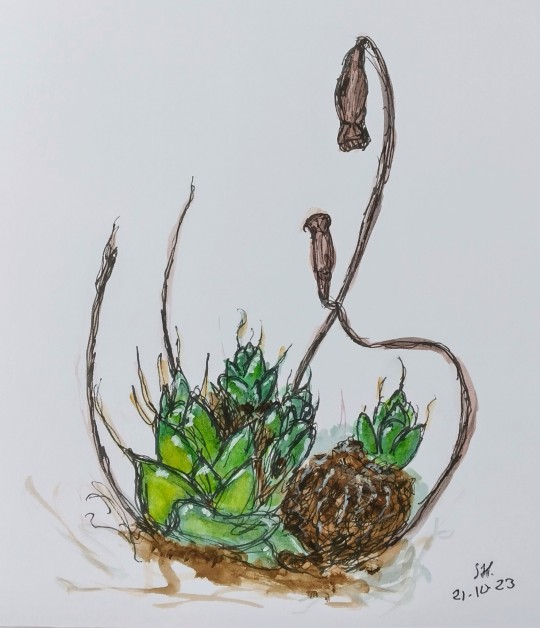
Apparently yesterday was National Moss Day. I discovered this when I accidentally joined a guided walk with the British Bryological Society people.
They were very nice and I ended up sketching one of their samples they brought which is apparently of Bryum capillare.
Anyway I've ordered a field guide now and hope to spend a bit more time staring very closely at trees in the future.
34 notes
·
View notes


